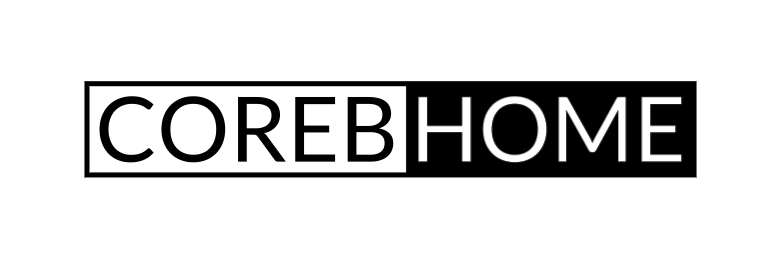In the intricate dance of modern living, the quality of the air we breathe within the confines of our homes emerges as a crucial determinant of overall well-being. As the nexus of health and home converges, the spotlight on Indoor Air Quality (IAQ) intensifies, underscoring its pivotal role in the pursuit of Home Wellness. This exploration delves into the multifaceted dimensions of IAQ improvement, weaving together the threads of scientific precision, technological innovation, and a commitment to cultivating a living environment that breathes vitality into every facet of our lives.

Understanding the constituents of indoor air and their potential impact on health lays the foundation for effective IAQ management. The spectrum of pollutants, ranging from particulate matter and volatile organic compounds (VOCs) to biological contaminants, underscores the complexity of the indoor environment. Particles released from cooking, pet dander, and off-gassing from furniture contribute to a cocktail of potential irritants that, when inhaled over time, can compromise respiratory health and overall wellness.
In the quest for a holistic approach to IAQ improvement, strategic design interventions take center stage. Ventilation, often overlooked, emerges as a critical element in ensuring a constant supply of fresh air. Thoughtful placement of windows, exhaust systems, and the integration of natural ventilation techniques facilitate the exchange of indoor and outdoor air, preventing the stagnation of pollutants. The synergy of biophilic design principles further amplifies IAQ enhancement, incorporating indoor plants that act as natural air purifiers, removing harmful substances and infusing spaces with oxygen.
Technology, a potent ally in the pursuit of Home Wellness, transforms IAQ management into a sophisticated undertaking. Smart air purifiers, equipped with advanced filtration systems, tackle a spectrum of pollutants, from allergens to microscopic particles. Integration with smart home platforms allows for real-time monitoring of IAQ parameters, providing insights into pollutant levels and enabling automated adjustments to ventilation and filtration systems. Air quality sensors, strategically placed throughout the home, offer a comprehensive understanding of pollutant distribution, empowering residents to take targeted actions for improvement.
Filtration systems, often the unsung heroes of IAQ enhancement, play a pivotal role in capturing and removing particulate matter that can compromise respiratory health. High-efficiency particulate air (HEPA) filters, with their ability to trap particles as small as 0.3 microns, stand as a gold standard in purifying indoor air. The evolution of filtration technology extends to electrostatic precipitators and activated carbon filters, each catering to specific classes of pollutants, ensuring a comprehensive and tailored approach to IAQ management.
Humidity control, a subtle yet impactful facet of IAQ, warrants meticulous attention. Excessive moisture creates a breeding ground for mold and dust mites, triggering allergies and respiratory issues. Dehumidification systems, seamlessly integrated into HVAC systems, maintain optimal humidity levels, curbing the proliferation of these indoor contaminants. Smart humidity controllers, responsive to ambient conditions, add a layer of sophistication to IAQ management, ensuring a delicate balance that fosters both health and comfort.
The evolution of IAQ improvement extends beyond the technical realm to encompass behavioral adaptations that contribute to a healthier indoor environment. Mindful practices, such as regular cleaning routines, reducing the use of chemical-laden cleaning products, and adopting a shoes-off policy, collectively mitigate the introduction of pollutants into the home. The conscientious selection of low-emission furniture and building materials adds a layer of preventive care, minimizing the release of VOCs that can linger in indoor air.
In the culinary realm, where the act of cooking can introduce pollutants such as particulate matter and odors, dedicated ventilation systems become indispensable. Range hoods, equipped with efficient exhaust systems and filters, evacuate cooking byproducts before they permeate the living spaces. Smart kitchen designs incorporate these ventilation solutions seamlessly, aligning culinary artistry with a commitment to IAQ enhancement.
The imperative of IAQ improvement gains heightened relevance in the context of the contemporary lifestyle, where homes double as workplaces. Home offices, characterized by prolonged occupancy, necessitate tailored solutions to maintain a healthy indoor environment. The integration of dedicated ventilation systems, air purifiers, and thoughtful spatial design that fosters natural light and ventilation emerges as a holistic strategy to elevate IAQ in these essential living and working spaces.
The significance of IAQ improvement extends beyond the immediate health benefits to encompass long-term implications for cognitive function and overall well-being. Studies underscore the correlation between improved indoor air quality and enhanced cognitive performance, productivity, and a reduction in the prevalence of respiratory ailments. In the pursuit of Home Wellness, IAQ emerges as a silent architect, shaping an environment that not only supports health but also nurtures the cognitive and emotional aspects of daily living.
In conclusion, the elevation of Indoor Air Quality stands as a cornerstone in the intricate edifice of Home Wellness. Through the convergence of scientific understanding, technological innovation, and conscious design, we have the capacity to breathe life into our living spaces, fostering an environment that transcends mere shelter. The pursuit of clean and healthful indoor air is not just a quest for physical well-being but a testament to our commitment to crafting homes that resonate with vitality, ensuring that every breath taken within our abodes contributes to a life profoundly well-lived.









No Comment